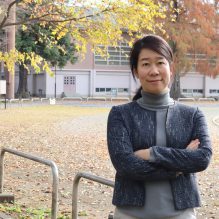-
About
- Kyoto Prize
-
Research Grants
-
Social Contributions
- Events
- News
About
Research Grants
Social Contributions

Assistant Professor, Center for International Exchange, Utsunomiya University *Profile is at the time of the award.
2021Inamori Research GrantsHumanities & Sociology
I am very grateful and honored to have been selected for the Inamori Research Grant. By making the most of the grant, I would like to analyze the topic of disaster volunteers in Japan, who are essential actors in disaster response and recovery of the affected areas, through comparison with the U.S., and deepen the discussion on the topic.
This study examines the roles and functions of disaster volunteers, NPOs and NGOs, and human resource development in light of sustainable recovery, through case studies and international comparisons in Japan and the United States. The research report is divided into the following three main findings
The study examined the Community Emergency Response Team (CERT) as a disaster volunteer in the U.S. To date, 2,700 CERT trainings have been conducted in 50 states across the U.S., and a total of over 600,000 people have participated in CERT trainings. The CERT training is targeted at the general public and is intended to develop human resources who can prepare for and respond to disasters that occur in their communities, and it is important to examine the CERT program when considering human resource development for disaster volunteers in Japan (1).
After reporting an overview of the Japanese civilian certification in the field of disaster preparedness and the CERT program in the U.S., we compared the two. The results revealed that while both programs have some similarities in terms of training background and objectives, program content, and implementation methods, there are differences in the examinations and fees for certification, as well as in the assigned roles and practical activities after certification. Based on this, we propose that the certification of disaster management professionals needs to be reconsidered and the role of disaster management professionals needs to be clarified so that more human resources can be involved in disaster volunteer activities (2).
The number of volunteers who worked in Iwate, Miyagi, and Fukushima prefectures, the areas affected by the Great East Japan Earthquake, between 2011 and 2017 was assessed and factors were examined. As a result, 187 disaster volunteer centers were established in the Great East Japan Earthquake, mainly in Iwate, Miyagi, and Fukushima prefectures, and a total of 1,545,000 volunteers were active, the highest number of volunteers in any disaster since the Kobe Earthquake. Although the number of volunteers decreased after that, the long-term operation of volunteer centers for seven years until January 2018 is a unique feature of volunteer activities following the Great East Japan Earthquake. The number of volunteers peaked in May 2011, due to the progress in infrastructure restoration and the first Golden Week holiday after the disaster. In addition, the monthly number of volunteers follows a certain pattern, increasing in March and August. We assume that the reasons for this are due to the long vacations and the months in which the earthquake occurred. Looking ahead, when a major disaster occurs, the number of active volunteers is extremely large and their activities can be seen as long-term. In the Great East Japan Earthquake, many facilities of support organizations and their staff were damaged, and while infrastructure restoration was not in place, the volunteer center set-up system and operational environment were established with support and logistical support from outside the disaster area, so it is necessary to establish a daily cooperation and collaboration system (3).
(1) Akiko Iizuka (2022) “Human Resource Development in Regional Disaster Management: A Case Study of CERT in the U.S.,” Symposium on Community Co-creation for Disaster Reduction and Community Planning, December 9, 2022.
(2) Akiko Iizuka (2023) “Disaster Prevention Specialists in Japan and Volunteer Training for Disaster Management in the U.S.”, Japan-Taiwan Scholars Exchange and Discussion Meeting on Disaster Prevention Specialists, March 3, 2023.
(3) Iizuka, A. (2023) “Trends in the Number of Volunteers and Factors Contributing to Their Participation in the Great East Japan Earthquake”, Special Papers on the Great East Japan Earthquake, 12, 12–16, 2023.
Humanities & Sociology